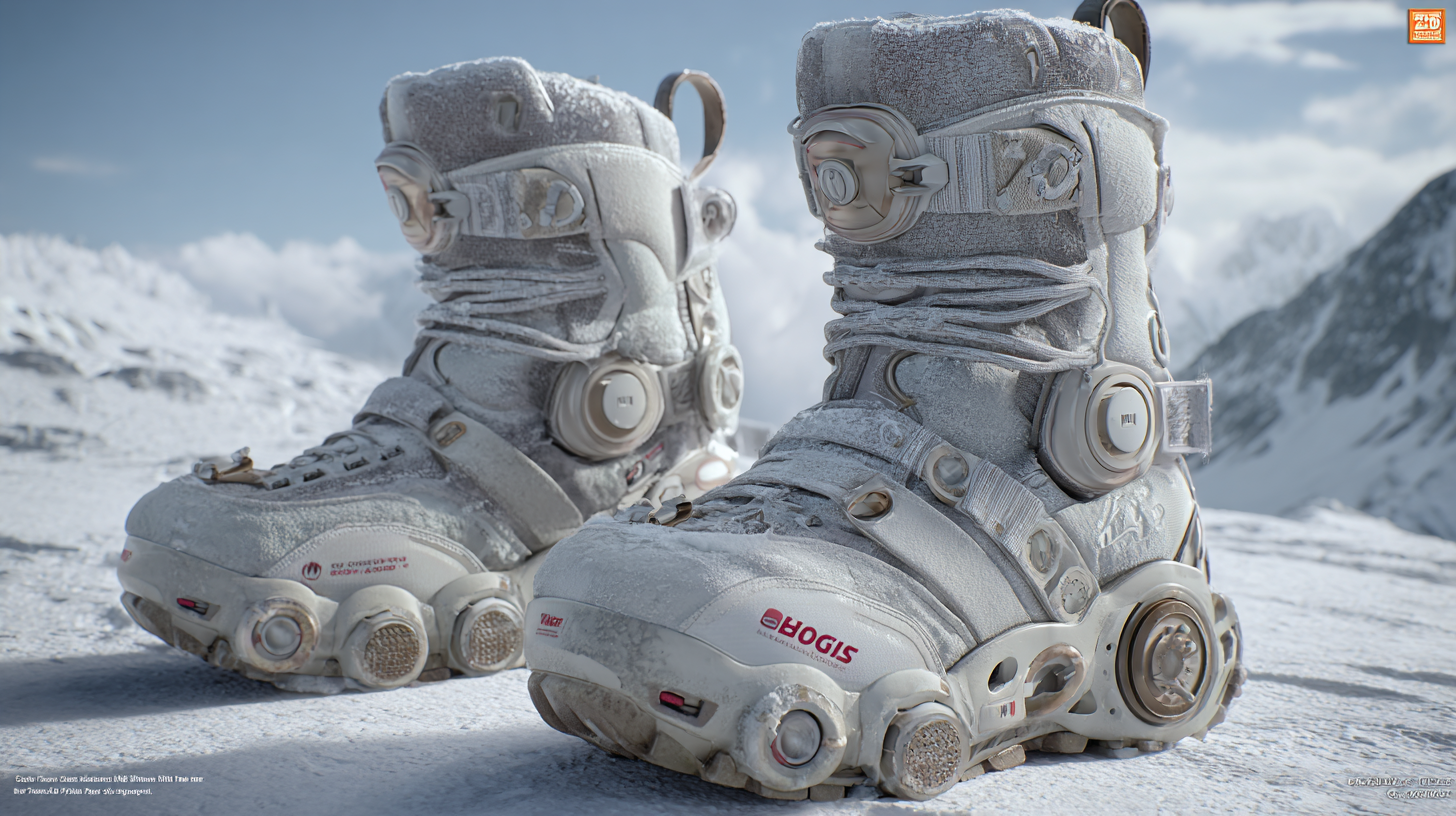
As winter approaches, the demand for high-quality snow boots continues to surge, with a projected market growth rate of 5.7% annually, as highlighted by the Footwear Market Report 2023. Consumers are increasingly seeking innovations that merge comfort, durability, and performance in their winter footwear. The right pair of snow boots not only protects against harsh weather conditions but also enhances overall foot health by providing proper support and insulation.
 With an emphasis on selecting reputable manufacturers, this blog will delve into the latest advancements in snow boot technology for 2025, exploring alternative options that ensure ultimate winter comfort. By understanding the key features and benefits of various models, readers can make informed decisions that align with their winter lifestyle needs, ensuring they stay warm and stylish throughout the season.
With an emphasis on selecting reputable manufacturers, this blog will delve into the latest advancements in snow boot technology for 2025, exploring alternative options that ensure ultimate winter comfort. By understanding the key features and benefits of various models, readers can make informed decisions that align with their winter lifestyle needs, ensuring they stay warm and stylish throughout the season.
 As we look ahead to 2025, the snow boot industry is experiencing a wave of innovations that promise to revolutionize winter comfort. Emerging technologies, such as advanced insulation materials and smart textile fabrics, are leading the way in enhancing performance. For instance, research conducted by the Outdoor Industry Association indicates that boots featuring aerogel insulation can be up to 40% lighter while providing superior warmth. This lightweight design not only reduces fatigue for winter adventurers but also improves mobility on the slopes.
As we look ahead to 2025, the snow boot industry is experiencing a wave of innovations that promise to revolutionize winter comfort. Emerging technologies, such as advanced insulation materials and smart textile fabrics, are leading the way in enhancing performance. For instance, research conducted by the Outdoor Industry Association indicates that boots featuring aerogel insulation can be up to 40% lighter while providing superior warmth. This lightweight design not only reduces fatigue for winter adventurers but also improves mobility on the slopes.
Furthermore, the integration of moisture-wicking and breathable technologies ensures that feet stay dry and comfortable, even in the harshest conditions. Brands are now utilizing predictive analytics to create customized fits based on foot shape data, ensuring that each pair of boots meets the unique needs of the wearer.
Tip: When choosing snow boots, look for models with flexible yet supportive soles made from rubber compounds, which provide better traction on icy surfaces. Also, consider boots with removable liners—this feature enhances drying and allows for customizable insulation levels based on the weather. Investing in snow boots that incorporate these cutting-edge technologies will enhance your overall winter experience and keep you comfortable in any winter environment.
As we approach the winter of 2025, snow boot innovations are evolving to enhance comfort and performance in extreme conditions. When selecting snow boots, it's essential to look for five key features that define their effectiveness. According to the Outdoor Industry Association's report, 65% of consumers prioritize insulation and warmth when purchasing winter footwear. Thus, boots with advanced insulation materials like Thinsulate or Aerogel will ensure that feet remain warm even in the coldest temperatures.
Another critical aspect to consider is waterproofing technology. With 70% of winter sports enthusiasts experiencing wet socks due to insufficient waterproofing, features like Gore-Tex or waterproof leather can make a significant difference in comfort. Additionally, a robust traction system is paramount; the same OIA report indicates that poor traction is a top complaint among 55% of winter footwear users. Brands are now integrating advanced rubber outsoles with multidirectional lugs to provide better grip on icy trails, ensuring safer outings in snowy environments. Lastly, lightweight materials combined with ergonomic designs will prevent fatigue, so opting for boots that enhance mobility without sacrificing durability is crucial for any avid winter adventurer.
The winter footwear landscape is evolving rapidly, driven by innovative materials that enhance comfort and functionality. As we look toward 2025, advancements such as hybrid waterproof materials are becoming increasingly common, allowing boots to merge style with performance. These innovations not only provide superior insulation but also ensure that feet remain dry in harsh conditions, making them ideal for various winter activities.
Additionally, the latest designs in winter footwear are focusing on the needs of active consumers. The introduction of specialized footwear for running in snowy conditions illustrates a shift towards combining cutting-edge technology with practicality. These advancements set a new benchmark for comfort and grip, catering to those seeking unmatched performance in winter sports while maintaining a fashionable look. Overall, the future of winter boots looks promising, with materials and technologies that promise to revolutionize the way we experience winter comfort.
As winter approaches, assessing your footwear options becomes essential for navigating diverse conditions while maintaining comfort. While snow boots have long been the go-to choice, innovative alternatives are emerging that cater to different winter scenarios. For those tackling icy sidewalks, waterproof insulated sneakers provide a sleek yet functional option. Designed with advanced grip technology, these shoes not only keep your feet dry but also enhance stability, making them ideal for casual outings and errands.

For more rugged terrains, consider hiking boots that blend durability with warmth. Modern designs often feature thermal linings and waterproof materials, allowing for extended outdoor adventures without sacrificing comfort. These boots are perfect for winter hiking or snowshoeing, ensuring your feet stay cozy in even the most challenging conditions. Additionally, slip-on winter slippers are gaining popularity for indoor use, offering plush support and insulation perfect for cozy evenings at home. By exploring these alternative footwear options, you can tailor your winter wardrobe to suit your lifestyle and the unique challenges of the season.
As consumers become increasingly eco-conscious, the snow boot industry has embraced sustainable practices that cater to this demand. In 2022, a report by the Global Footwear Sustainability Insights estimated that around 40% of consumers considered sustainability when making footwear purchases. This shift has prompted manufacturers to explore eco-friendly materials and innovative production methods that reduce environmental impact. Brands are now utilizing recycled plastics, organic cotton, and biodegradable materials to create boots that not only offer optimal warmth and comfort but also align with consumers' values of sustainability.
Moreover, advancements in manufacturing techniques have led to reduced waste and energy consumption. A recent study highlighted that adopting lean manufacturing principles can decrease production waste by up to 30%, significantly benefiting both the environment and the company's bottom line. Synthetic insulation made from recycled materials is becoming a popular alternative for traditional down, offering comparable thermal efficiency while minimizing reliance on resource-intensive processes. By integrating these sustainable innovations into their designs, snow boot manufacturers are paving the way for a more environmentally responsible winter experience.
